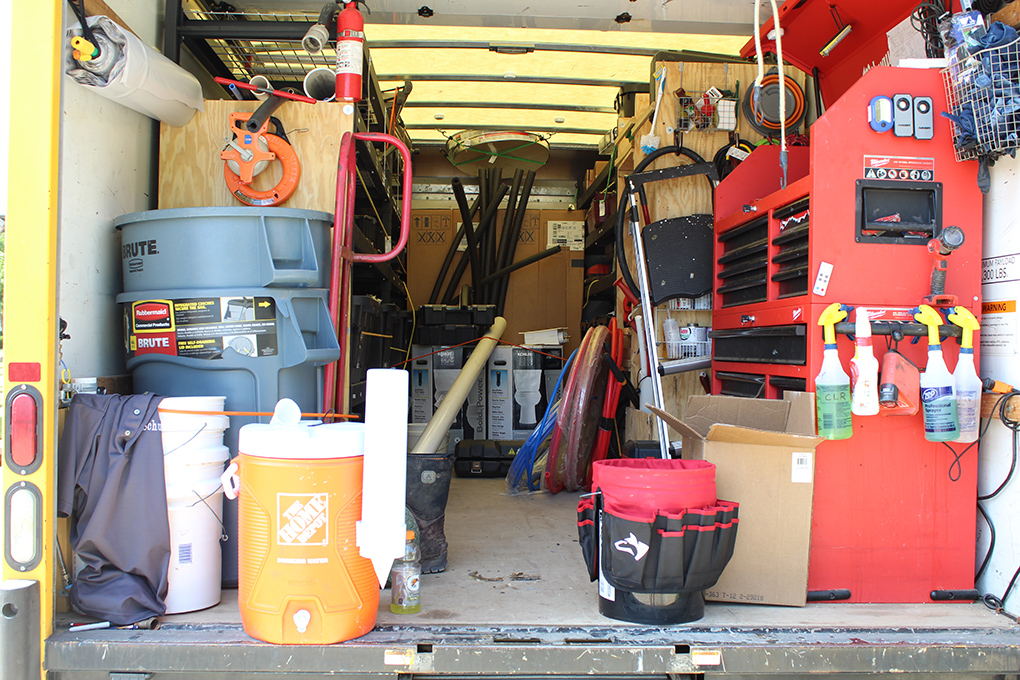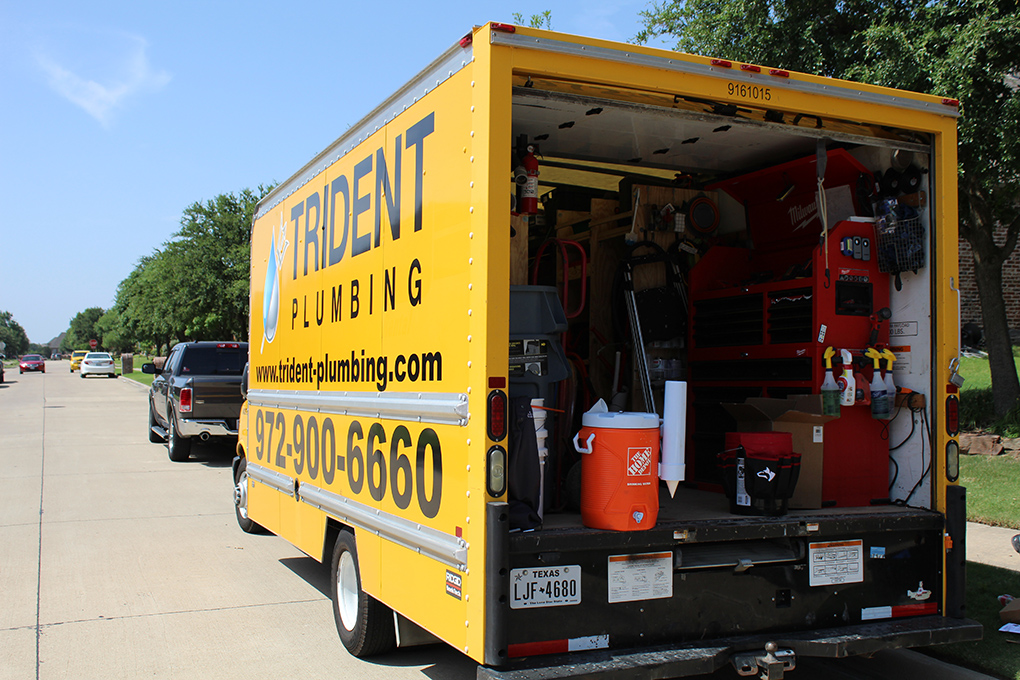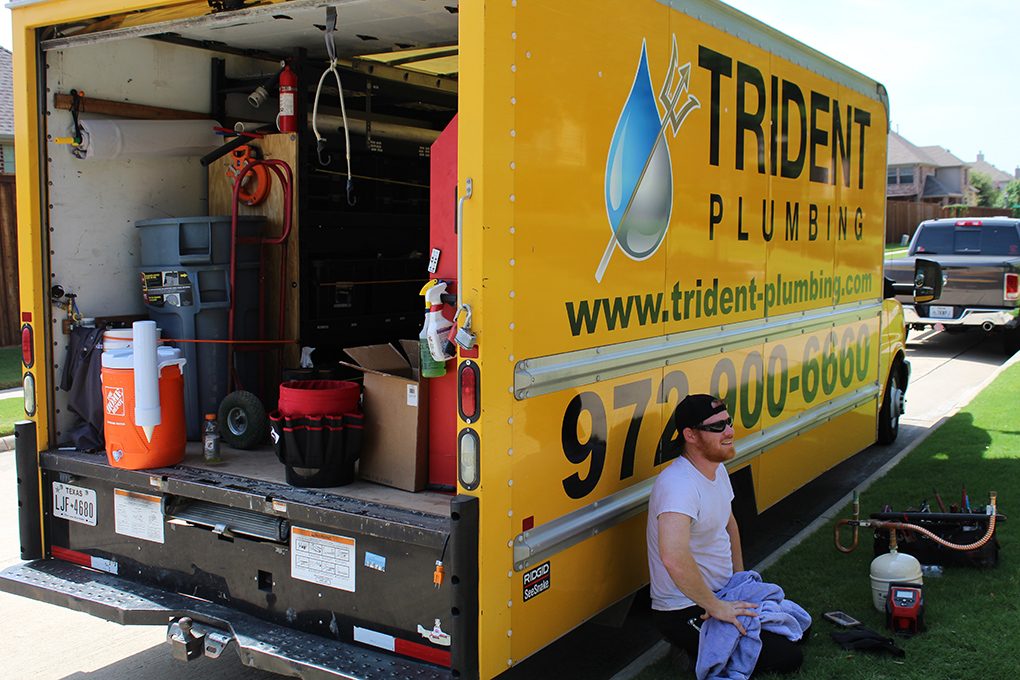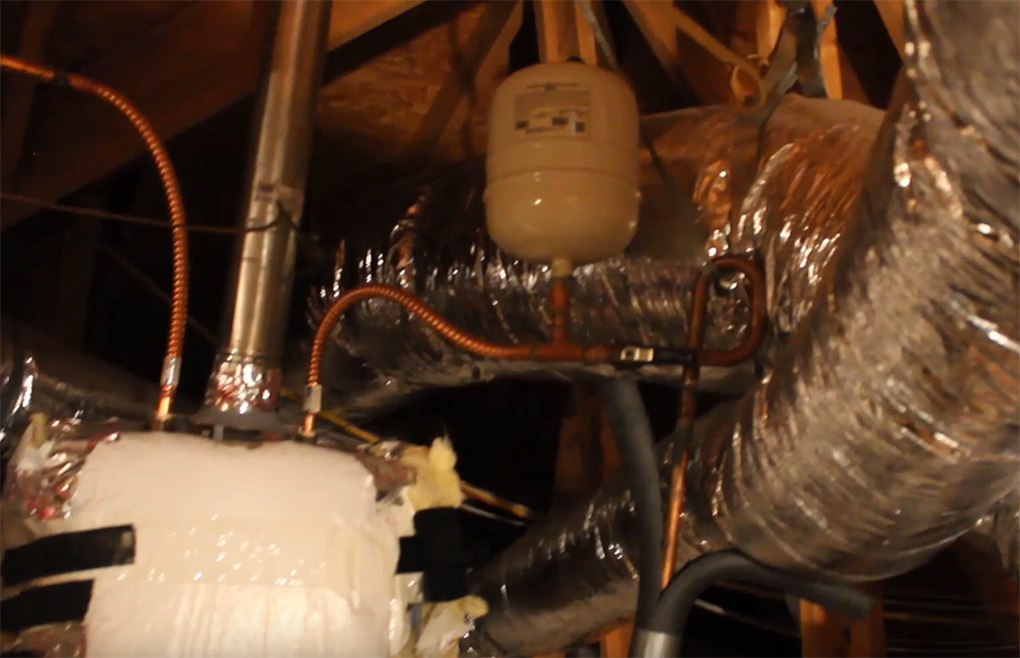A water heater thermal expansion tank is a small tank that is attached to the water supply pipe of the water heater. The expansion tank is designed to handle the thermal expansion of water as it heats up in the water heater, preventing excessive water pressure.
Many homes in North Texas, built before 2002, were not built with an expansion tank and have high water pressure but don’t have that regulator. After 2002, every home in the area has one. They typically last 8-12 years.
5 Common Water Heater Thermal Expansion Tank Problems
- Can you see water leaking?
- Air Blockage – Is water not flowing through the pipes or heater?
- Steel Expansion Tank Needs Recharging
- Not Enough Air in Diaphragm Tank
- Can you spot any buildup in condensation?
or complete the form below
To learn more about Pressure Reducing valve Repair, watch the video below or read through the video transcript below.
Summary of Water Heater Thermal Expansion Tank Video
In Frisco, for example, the water comes from the city at 110 psi and leaves at 60 psi. When you have that regulator installed… it can take that excess pressure.
EXPANSION TANK REPLACEMENT
If it ever did let go, it could cause water damage. We are installing the expansion tank over the water heater pan so if it leaks, it won’t damage the home.
Does every home in Frisco has to have an expansion tank?
Every home built in 2002 or after has one.
How Long Do They Last?
Water Heater Expansion Tanks typically last eight to 12 years, some people get 15 to 20, but the average lifespan is about 12 years.
Mandatory pressure reducing valve installation in Frisco
In 2002, the city of Frisco created an ordinance that says all homes built 2002 and newer going on have to have a pressure reducing valve in the flower bed – or somewhere inside the garage or home.
In 2008, the city of Frisco realized you had to have the expansion tank to go with it. So there are homes in the ’05 range that have this that do not have this, but when you put in a pressure reducing valve, what you’re doing is called closing the loop. The water comes from the city at 110 psi and leaves at 60 psi. When you have that regulator installed, 60 psi can never push back on 110. The 110 is stronger. That’s why you need the expansion tank, a place to take that excess pressure.
Results of a broken Pressure Reducing Valve
A Broken Pressure Reducing Valve can cause premature wear on all of your appliances, anything that is attached to the cold water system, washing machines, dish washers, refrigerators, toilet fill valves are typically the first to go.
Symptoms of a Broken Pressure Reducing Valve
Homeowners will notice a humming, banging, knocking in the walls.
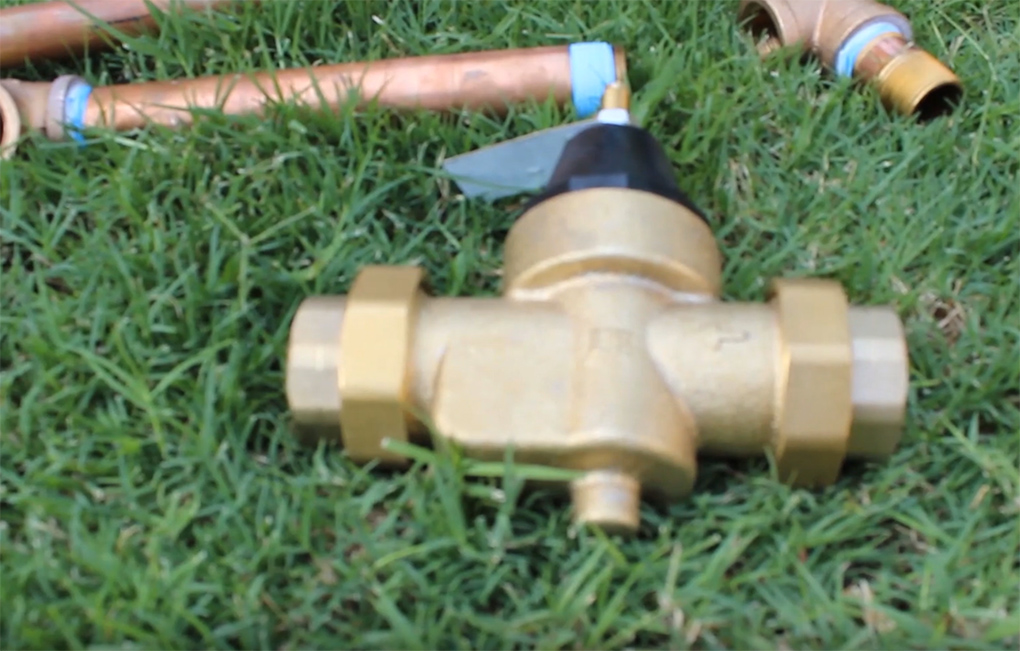
The pressure reducing valve has a lot of city codes that go with putting this in:
- It’s got to have a 12′ X 18′ yard box, which is sitting behind you.
- It’s got to have gravel put in the box.
- It’s got to be raised to the top of the box with a shut off valve prior to a union.
- You have to have a shut off valve prior to the regulator
- It can not be deep down in the dirt.
Plumbing Code in Frisco for Pressure Reducing Valve
Plumbing code in Frisco says that you can have your water line at a minimum of 12 inches deep. This home here is at about 36 inches so it’s just going to be a little bit more of excavation required, but what we’ll do is we’ll raise it to the top of that box, so that way in the future if this ever has to get swapped out again, 10-12 years from now, we won’t have to re-excavate that deep down into the ground.
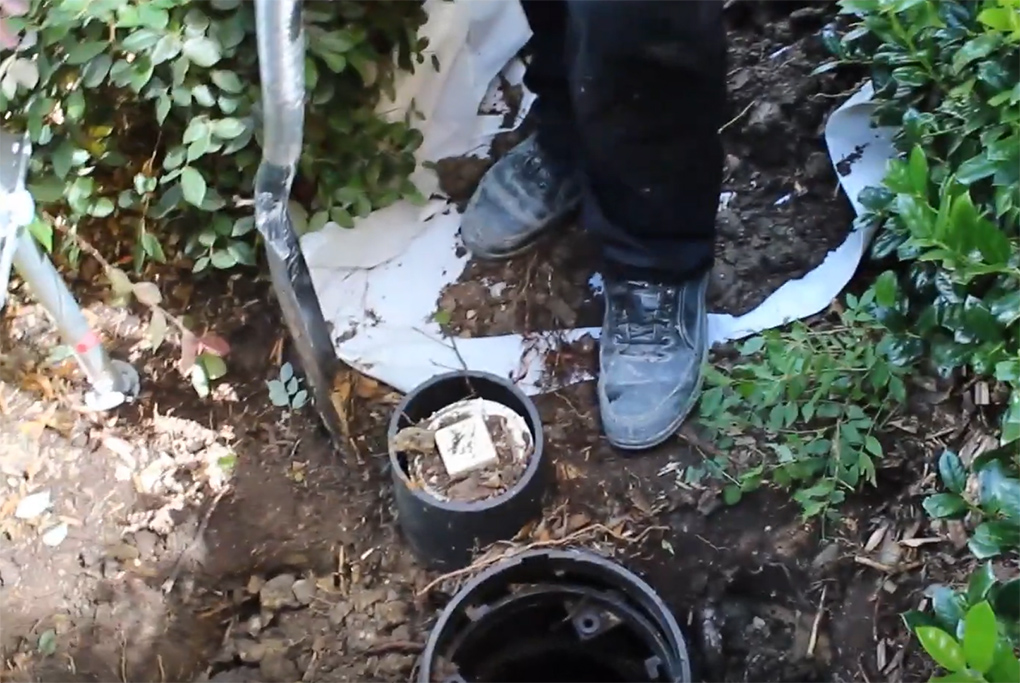
Process to a Pressure Reducing Valve
Transcription from video – This one’s about three feet. Two,three feet. So you’ve got to dig this whole thing out. We have to dig it out and get about six inches below the water line that’s in there currently. There are tons of roots, because I had to remove all those trees already because they grew right over the top of the box.
If you go out to some municipalities they still make you put it out in the flower bed. Like Lucas, out there they want you to put it in the flower bed, and Fair view they want it still in the flower bed and not in the garage wall.
Why is the PRV put in the flower bed?
Just that’s what they want. Each municipality can interpret the code however they want it. So just to hide it a little bit I guess? Yeah, I’m assuming so, or so that there’s no damage inside the house. It’s all outside if it leaks. It feeds the flowers if it leaks and then you don’t know.
If you do it right the first time, it gives a better example and then if you stay in tune with that you’re never going to have a fail and that won’t make you look bad in front of the customer either like you don’t actually know what the city requires.
How many PRV replacement jobs have you done in Frisco?In Frisco, hundreds. Yeah and the newest code that Frisco just did is you have to put a union on it now. They changed that within the past, you know, six months to a year. That used to not be code, but now you need a union on it. Whether it’s in the wall or in the ground, used to, unions had to be in the walls, not under dirt.
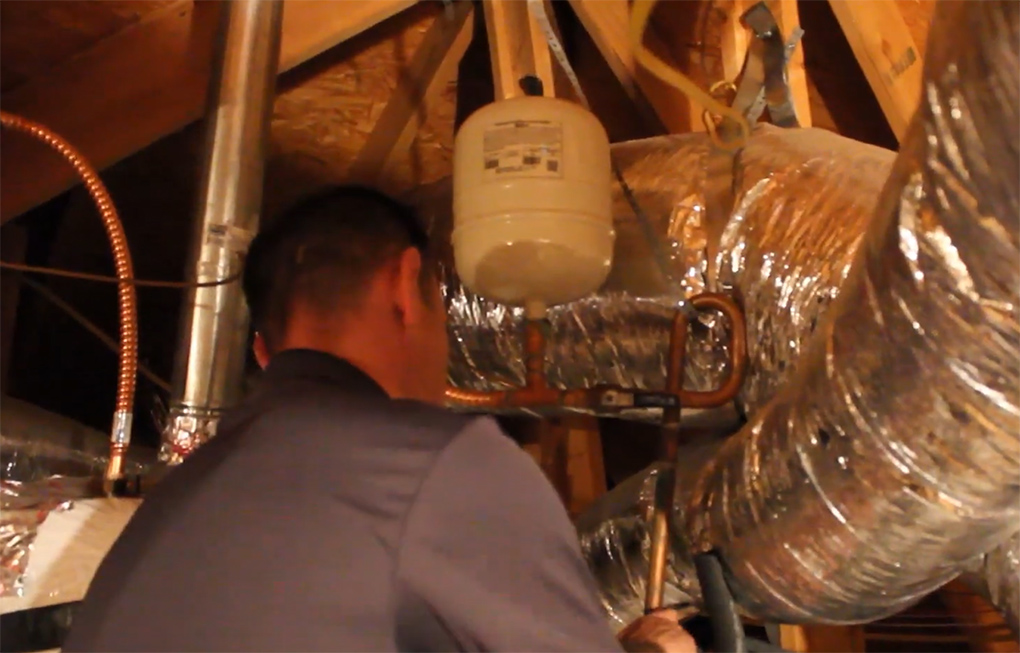
Replacing floating expansion tank
We’ve got a two gallon which is made for one heater, we have two heaters so this needs to be double the size. It’s over the attic so if it ever leaks it’s going to come straight down into his ceiling.
We’re going to move the new one over here above this pan and then it’s all welded together so we’re going to replace all of this. These heat traps, nobody uses these anymore. They’re not really outlawed, it’s just theories have changed over the years so being that there’s a welded on cup link and it’s all rough, we’re going to go ahead and cut all that out and start over. We’re just going to do it right the first time so that way, I mean, Lee’s not going to stay here, but whoever gets to live here doesn’t have to keep paying to do the same service over and over and over again.
This thing really is twice the size of that other older one.
So know what we’ll do is this. Step one, cut the water line. So this sucker is heavy and full of water, so it’s going to drop when I cut this and probably going to lose a little bit of water, so I try to be as quick as I can.
The very last step after this is just to come up and insulate once we check everything for leaks.
Contact Us
We serve Frisco, Little Elm, Prosper and these nearby areas.

